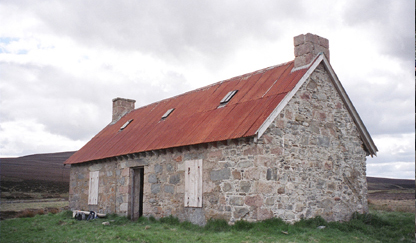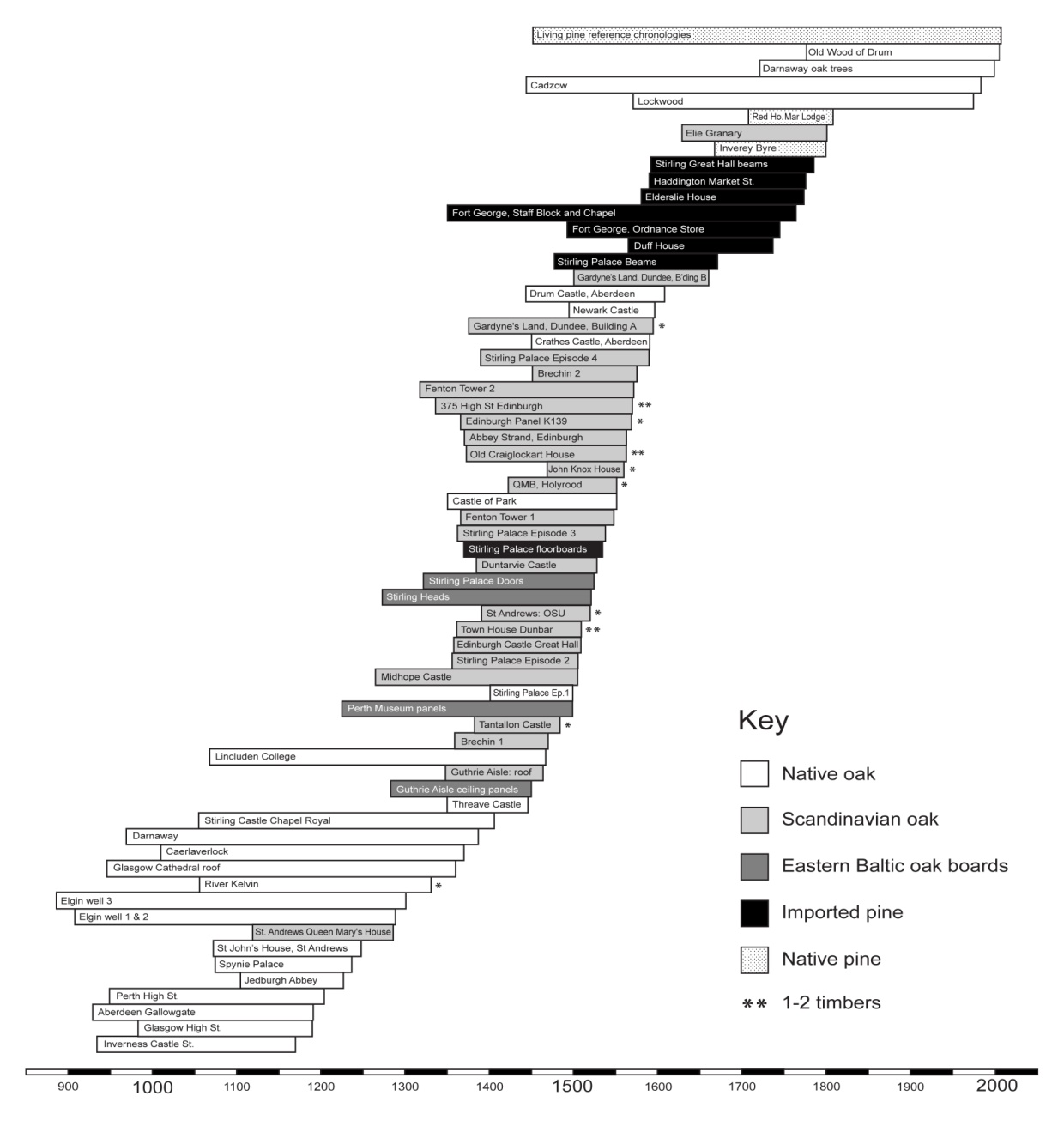Last update:
8-02-2020
|
|---|
Historical material to augment the natural pine record
Scotland’s native pine woods have a long history of use. Native pine timber was used extensively for construction historically, especially in those areas within easy reach of the native pine woodlands. These areas relied less on imported timber which become prevalent in many parts of Scotland from around the mid-15th Century (Mills & Crone 2012). Documents also show that native pine timber was sometimes transported quite long distances within Scotland, down her rivers and around her coast, so we may occasionally find native pine timber some distance from the relict Caledonian pine woodlands.
Our work from 2013 will have a focus on locating and sampling suitable native pine timbers in historic structures, especially in the native pine heartlands. We hope to augment the native pine tree-ring record for those periods where the natural living tree and recent sub-fossil record is thin, quite probably as a consequence of past phases of felling and exploitation. This also presents an opportunity to contribute to the greater understanding of the Scottish built heritage by dating more historic pine structures and identifying the likely provenance of their timbers. As well as using orthodox ring-width cross-dating methods, we plan to test the new Blue Intensity method to establish the extent to which this will assist dating of pine timbers.
Call for information on pine timbers for sampling
We would welcome information on potentially suitable pine timbers, either in old buildings or in archaeological contexts in Scotland, especially the northern half of the country. Please contact Dr Coralie Mills at cm212@st-andrews.ac.uk if you know of any possibly suitable material.
Coring pine cruck stubs in the Red House, Mar Lodge Estate The Red House, Mar Lodge Estate Background
This work is being undertaken through the NERC-funded SCOT2K element of the Scottish Pine Project which aims to establish a continuous native pine record for the last 2000 years for both climate reconstruction and cultural heritage objectives. Coralie Mills is employed as a part-time post-doctoral Research Fellow on SCOT2K to pursue the historical aspects of the project.
This work builds on the outcomes of previous archaeo-dendro projects including the Native Oak and Pine Project (run jointly by Anne Crone and Coralie Mills) which sampled a number of pine-built structures in North-East Scotland (Mills & Crone 2012). While tree-ring dates were obtained for two buildings in the Mar Lodge area (Mills 2008), assisted by the strong network of local living pine chronologies (Wilson et al 2011), a number of other structures remain undated, including several Speyside buildings and some pine timbers excavated from Eaderloch Crannog (in Loch Treig near Roy Bridge; Crone 2011) which radiocarbon dating places loosely into the 16th Century. The new phase of work within SCOT2K on both natural and historical pine from the last 2000 years should help with dendro-dating these and other newly sampled pine structures.
Sampling pine timbers at Eaderloch Crannog ; sequences measured but not yet dated Pine-built cruck cottage in Upper Speyside; tree-ring samples measured but so far undated (Mills 2013) The figure below shows a snapshot of the Scottish historical tree-ring record for the last millennium, as it stood in 2012 (excluding loch sub-fossil material). Each bar represents a dendro-dated site (buildings and archaeology), with time on the horizontal axis. The shading shows whether the material is oak or pine, native or imported. Some key living-tree reference sites are included at the top. Taken from Mills & Crone 2012, Figure 1.
References
Crone, A 2011 ‘Late beginnings: an early modern crannog at Eaderloch, Loch Treig' by Anne Crone, History Scotland, January 2011, 33-37
Crone, A & Mills, C M In press ‘Timber in Scottish buildings, AD 1450 – AD 1800; A dendrochronological perspective’ Proc Soc Antiq Scot.
Mills, C 2008 ‘Historic pine and dendrochronology in Scotland’, Scottish Woodland History Discussion Group: Notes XIII (2008), 9-14. ISSN 1470-0271.
Mills, C M 2013 Badden Cottage pine cruck frame: Stage 2 dendrochronology report. Report for Historic Scotland & Dunachton Estate.
Mills, C M & Crone, A 2012 ‘Dendrochronological evidence for Scotland’s native timber resources over the last 1000 years’, Scottish Forestry 66, 18-33.






